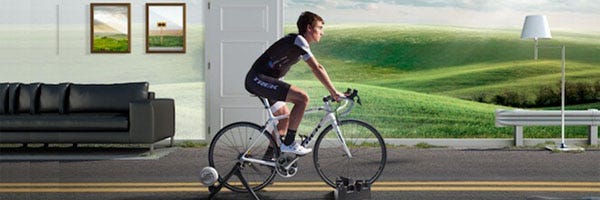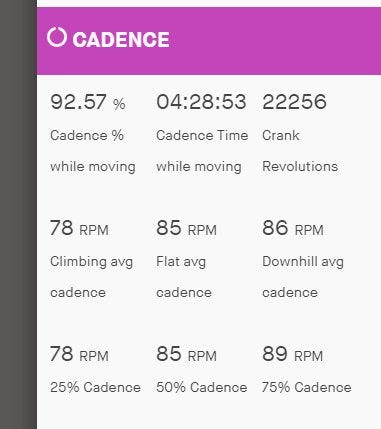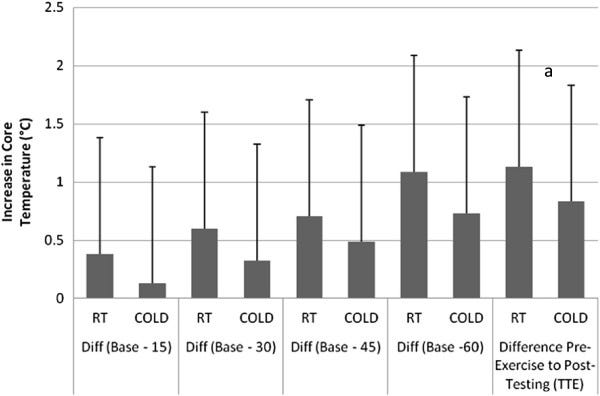Today let’s dig into the major differences of riding indoors vs outdoors

Following a recent video one of our viewers Curtis M wrote:
“Is there any difference in benefit between riding indoors vs riding outdoors? If I ride indoors for 90 minutes on a flat virtual course, I will do this without stopping. Let’s say I ride 20 miles at 125 watts average. Then I go outside on a flat course with little or no wind and I ride 20 miles at the same watts but due to traffic and traffic lights and signs, this ride takes me 2 hours. Does the stopping and starting of the outdoor ride enhance or detract from the fitness benefit as compared to the constant pedaling of the indoor ride? Thanks”
Well before we get into that just reflect for a second that many people believe one hour indoors is worth two hours of outdoor training. For example Matt Rowe of Rowe&King Coaching says “The simple rule is that one hour on the turbo is worth at least 1.5 hours, if not more, on the road”. The same is reported by others such as Simon Olney. So the general perception is indoor training is MORE effective; and not just a bit more TWICE as effective! Now let’s get into the facts.
#1 TRAINING HABITS ARE KING
When talking about what modality is the most effective stimulus, the number one rule is it training you actually do. Sure riding Alpe D’huez is probably out of this world in terms of training but you are never going to do that are you? So, if you prefer to ride indoors and do so regularly, then that’s your best training stimulus, and if you prefer to ride outdoors and only do that, then outdoors is your best training. In short, in a random group of people some will prefer riding outdoors and they probably will be slow to adapt to indoor riding (and visa versa).
#2 MOTIVATION

Next we need to talk about the second biggest factor which is motivation. Most people come to cycling from an outdoor orientation and love riding their bike outdoors. If that’s you, you probably struggle to ride indoors for 30miles but you could do that outside. In short, even if you are forced to a gun point, your motivation is going to be higher for your preferred environment and this in itself will influence our results. For example set 10 people riding indoor and 10 people riding outdoors until exhaustion and I guarantee the miles ridden for the outdoor group will be higher. So it stands to reason….if you ride twice as far outdoors then outdoors and generally feel motivated outside then this is going to be best for you. The same applies visa-versa but there are a smaller (but definitely growing) number of people strongly motivated by riding purely indoors. This is the “zwift effect”….because zwift is more like real life riding with real people.
#3 INTERRUPTIONS

OK, fine, you don’t dispute the above, but you want to know which is the best training stimulus if you did both indoors and outdoors equally? That is, for the same amount of hours or miles. Well the truth is there is another complication because even if you had the same rider do the same one hour indoors and one hour outdoors there would be significant differences.

Outdoors you would very likely face interruptions from traffic lights, cars, junctions, kids, prams, dogs on leads. God I hate dogs on leads across the road, towing owners on their mobile phones!! All this means outdoors is far from one continuous ride. In fact, you would have to be on closed roads, in a non-drafting TT race for the outdoor effort to look like the indoor one in terms of avoiding stops and avoiding coasting. Further, if you look at the amount of time pedaling vs not pedalling (aka “move ratio” on strava) then on many group rides you might only be riding 75% and even if you don’t remember stopping it might be 95%…and of the moving time you might be freewheeling 95% even though it seems like 100%. So let’s take a figure of 90% pedalling time as a typical ceiling on outdoor rides. Now this means on outdoor rides your are getting 10% breaks scattered throughout the ride even on tough efforts and maybe 70% on group rides: meaning outdoors is more like a continuous series of hard intervals where (for the basis of this comparison) the total time = total time indoors.
#4 CONVERTING INTERVALS INTO ONE CONTINUOUS EFFORT

Now here is a clever trick, we can use that 10% time off and calculate the effective workload of say 60mins split into 10 intervals with 20 seconds of rest in-between.
60mins over 10 equal intervals and 9x 20secs rest would be 57mins of fast moving time and 3mins of rest (about 5% less time) and actually around 5% easier than a continuous 60min effort (due to the interval rest effect).
So that’s 0.95*0.95 = 0.90……..and we can broadly we say outdoors is at least 10% less interrupted easier? Not really. We can say that if you somehow simulated the exact same course indoors and out in the real world outdoors would be 10% more interrupted.
#5 VARIABILITY INDEX

Fine; lets leave out interruptions and say for sake of argument you rode exactly the same number of crank rotations indoors and outdoors which would then be the better training. Well it is no secret that outdoor has many more challenges in terms of 1. hills 2. wind 3. corners. Your ride will be much more varied or stochastic than indoors and this is reflected in your powerfile. Powerfiles outdoors are littered with spikes as riders go up or around obstacles. Numerically this is reflected in the VI score or variability index. The VI is typically above 1.2 outdoors but less than 1.1 indoors. This means outdoors is a very different physiological challenge to indoors and generally much harder once you control for duration / motivation / crank revolutions.
#6 COOLING

So we finally have the answer than outdoors is harder? Not quite, there are a couple more complications. The first is cooling (and hydration), which is normally a bigger problem indoors without huge airflow of the real world. The body is ‘only’ between 16 and 28% efficient in converting stored fuel into power (it varies by baseline fitness). The remainder gets lost as heat energy or wasted metabolism. When training indoors your body is no longer moving through the air, almost eliminating the two biggest heat loss mechanisms; evaporative and convective heat loss. The result is a rise in surface > core temperature (see link).
If you exercise fairly hard for an hour your core temp goes up about 1degree. If you drink cold water regularly during the exercise then the rise is about 20% less (0.8°) see J Int Soc Sports Nutr. 2012; 9: 44. Skin temp is also cooler with cool drinks (see J Sports Sci. 2010 Sep;28(11):1147–56). Cooling with drinks might improve performance by 5% (although this could also be due to prevention of mild dehydration see link). Certainly studies have shown power output during prolonged cycling time trials in the heat (≥30°C) is on average reduced by 15% (see Temperature 2016; 3:4, 539–548)

Imagine you are creating 250 watts, another 750 watts will be created in heat. The hotter your body gets the more it diverts blood to the skin and the more sweat it produces trying to keep cool. Gradually this affects muscular endurance and causes dilation of the blood vessels in the skin => reducing the amount of blood returning to the heart and output and places more more strain on the system increasing the perceived exertion.
Overheating will make indoors physiologically harder if you don’t attend to cooling….just like riding on a very hot still day would be tough outdoors.
#7 PEDAL DYNAMICS

Finally we come to pedal dynamics. This is complicated but consider that outdoors momentum and inertia are high so when you coast you don’t dramatically slow down. Of course if you are climbing a steep hill at slow speed, your momentum is low and you do start to slow, in fact you slow when you aren’t pushing hard on the pedals in the downstroke. At 90 degrees to the peak downstroke the “deadspot” means your velocity will slow slightly and you will naturally try and pedal around the 360 circle. OR you could push harder at the peak downstroke which is exactly what happens if you get out of the saddle. My point here is that pedal dynamics change going uphill…and this is very similar to the effect you get on most turbo trainers. Turbos usually have small flywheels and their momentum is low and as such they slow relatively quickly, further electronic flywheels will slow the flywheel equally no matter what the speed causing an effect on pedal dynamics akin to riding outdoors even when indoors.
CONCLUSION

………So my ultimate answer to whether indoors or outdoors is a better training stimulus is neither is “better” but rather they are both “different”. If you are training for outdoor events and have the choice of nothing or training indoors, then training indoors is fantastic. If you are training for outdoor event but only train indoors it will be very difficult to compete with competitors who are training mostly outdoors. It would be like training for an outdoor marathon by only running on the treadmill. Possible yes, but very very difficult to pull off.
